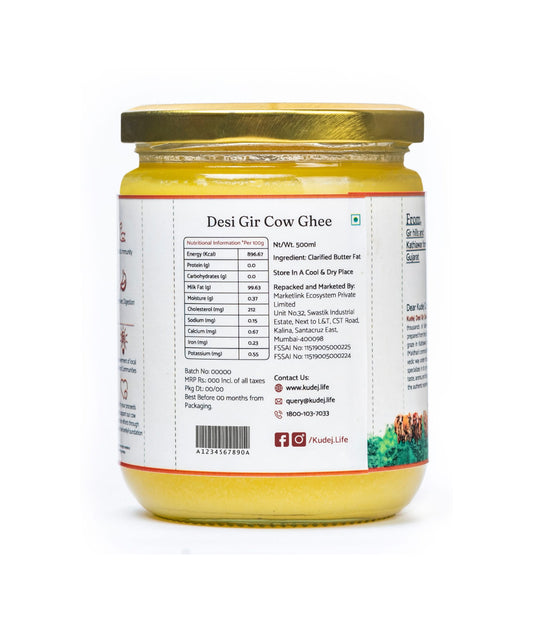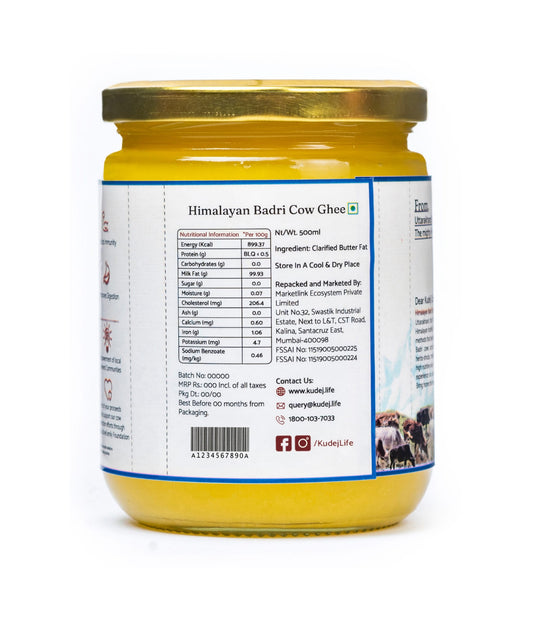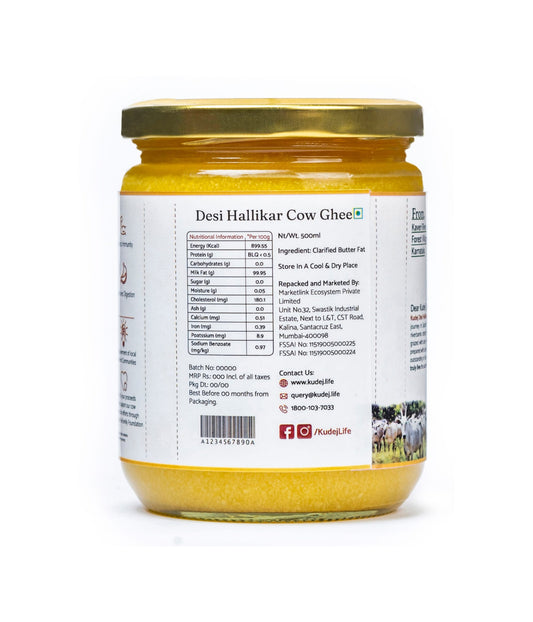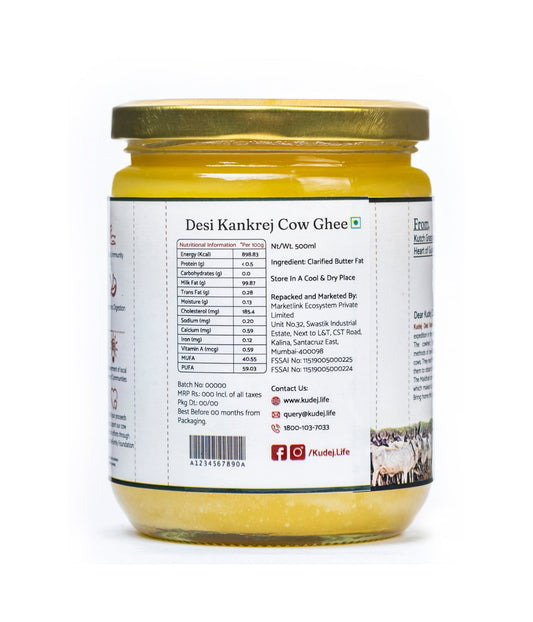Q. What is the size of the product?
A. The product comes in two size variants: 250ml and 500ml.
Q. Is the bottle used glass or plastic?
A. The product is packed in food-grade glass bottle packaging.
Q. Is the ghee purely A2 and made using the Vedic process?
A. Yes, the ghee is purely A2 and made using the Vedic process.
Q. Is the ghee appropriate to consume for all ages?
A. Yes, ghee can be and should be consumed by all age groups.
Q. Is the product returnable?
A. The product is non-returnable, but in case of breakage or spillage, it will be replaced.
Q. Is the ghee made by hand-churning or through machines?
A. Ghee is made using the curd-fermented bilona churning process.
Q. What is the shelf life of the ghee?
A. Ghee has a shelf life of 12 months from the packaging date.
Q. Is this ghee gluten-free?
A. Yes, this ghee is gluten-free.
Q. Why is inconsistency in the density of ghee natural?
A. The density naturally varies based on the cow’s food intake and the ghee-making process.
Q. Is there any kind of sugar present in the ghee?
A. No, there is no sugar present in the ghee.
Q. Why does the yellowish color of ghee vary?
A. Ghee contains Beta-carotene that gives it the yellow color, which varies based on the cows’ grazing diet.
Q. Does ghee contain preservatives?
A. No, ghee contains no preservatives.
Q. Is the process used cruelty-free?
A. Yes, a cruelty-free (ahimsa) process is followed entirely.
Q. Should we keep it at normal room temperature or in the refrigerator?
A. Store ghee in a cool, dry place at room temperature. Do not refrigerate.
Q. Is this ghee made from the milk of specific cows?
A. This ghee is made from the milk of either one Gir, Kankrej, Hallikar, or Badri Cow.
Q. Where is this ghee being made and packed?
A. The ghee is made under the supervision of cowherd communities in rural interiors and is packed in Mumbai, India.
Q. Can I use this ghee for multiple purposes?
A. Yes, ghee can be used in different ways as detailed in the ‘how to use’ section.
Q. Which of the ghee variants is best?
A. All are good. Each variant has a distinct taste and aroma. Choose based on your preference.
Q. What is the benefit of the curd/culture fermentation process?
A. It generates good bacteria beneficial for gut health, enhances absorption in the intestines, and helps lower gastrointestinal acidity.
Q. Does ghee increase cholesterol?
A. Ghee is rich in Omega-3 fatty acids, which reduce LDL (bad cholesterol) and increase HDL (good cholesterol).
Q. Why does the flavor and aroma change after a few months?
A. The bacterial culture from the curd fermentation evolves over time, altering flavor and aroma. Aged ghee has enhanced medicinal properties.
Q. What is the difference between A1 and A2 ghee?
A. A1 ghee (from crossbreeds) contains BCM7, which can negatively impact health. A2 ghee (from desi cows) is beneficial for health due to the absence of BCM7.




























